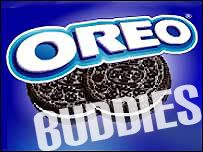
Drawing inspiration from the impoverished life of most Filipinos, Joey Velasco depicted in his painting – Hapag ng Pag-asa (Table of Hope) – 12 children sharing meal with Jesus Christ. Those children, in real life, have been victims of social injustices in the Philippines. Each of them has their own stories to tell.
According to Velasco in a speech in one of his lectures, these are the children whom he found in the streets of Manila and Quezon City and by which he paid to pose for him. But later on, through his partnership with Gawad Kalinga, he helped these children and their families to have their own homes where they can start anew with their lives.
Hapag ng Pag-asa is a simulation of the Last Supper but instead of the 12 Apostles, 12 street children are sitting beside Jesus. Canvassed using oil, the painting of Velasco is said to have a resemblance with the works of Rembrandt and Caravaggio. The three painters used the technique called grisaille, a French word which means “grey tones.” By definition, it is a monochromatic technique using various shades of grey. It can either stand alone as a finished artwork of black and white or it can be a basis or framework for a full colored artwork.
We may notice that in the painting Hapag ng Pag-asa, apart from the color gray, we can see some shades of yellow, blue, brown, and red. Here, we may assume that Velasco used the grisaille as his base for this painting to give a luminous effect on the characters. Furthermore, the use of bright colors that contrasts with the black background highlights the figures. Apparently, the use of grisaille adds with the drama and realism of the painting, moreover, it emphasizes the personality and emotion present in the artwork.
In terms of balance, the painting appears to have an equal weight on both sides: left and right, even though more children are situated on the right side of Jesus. This is because the figures on both ends (a big boy vs. two small boys) with unequal weight but similar in terms of height cancels out the unevenness or the imbalance.
When one will look closely to the painting, Jesus and the 12 children are not actually dining in a ‘table’ but rather as Fr. James B. Reuter, S.J. described as “a big delivery box, knocked apart and nailed together again” to give a complete impression of a table.
In this Velasco’s own version of the Last Supper, the face of Jesus Christ was lean and soiled unlike that of Da Vinci’s where Jesus’ face was neat and perfect. Velasco also used imagery to show how Jesus is in communion with the street children and is “breaking bread” with them.
The painting has been featured not only in galleries but also in schools and churches. Those who had seen the painting said that it is an ‘eye-opener’ for those who were still blinded by their fortunes and who have forgotten how many of their neighbors are suffering from poverty. It is a ‘reality check’ of how most of country’s poor children have been corrupted of their right to live a healthy life. - NIKKI ANGULO
Photograph Source:
http://www.geographyofgrace.com/2007/08/table_of_hope_2.html


No comments:
Post a Comment